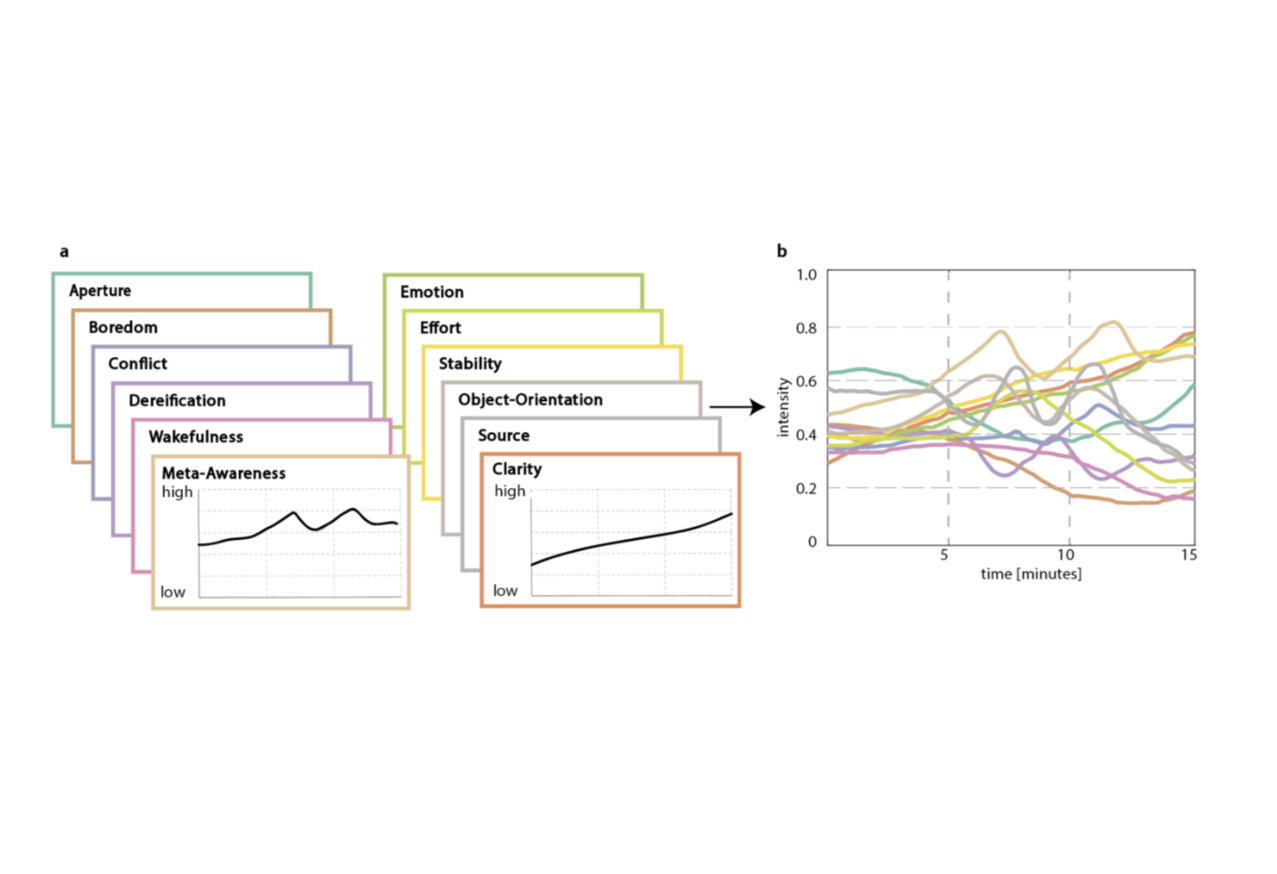Quantifying Consciousness: Neural and Physiological Dynamics in DMT Experiences
Aiming to elucidate the neurobiological factors underlying the variability of DMT-induced experiences, this project focuses primarily on changes in neural and physiological oscillations in healthy volunteers. Participants underwent EEG and peripheral measures (EDA and ECG) both before and during the acute effects of inhaled DMT or placebo in a naturalistic setting, using a within-subject study design.
After the experience, participants engaged in “experience tracing”, a method designed to capture essential elements of the conscious experience over time. This technique involves a continuous multidimensional description across 15 dimensions, including several affective components such as boredom, alertness, and emotional intensity. Experience tracing is central to this study because it allows for the computational reconstruction of shared experiential states, thereby enabling the quantitative analysis of subjective experience.
The central goal is to analyze how the description of the dynamics of experience can facilitate the quantitative analysis of subjective states, especially in the context of DMT experiences. This approach transforms the narrative aspect of stream of consciousness into measurable data, providing new insights into the psychological and neurophysiological effects of DMT.

